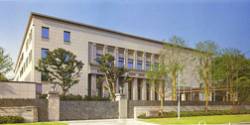What have we learned from the LightSquared fiasco?
Aside from the fact that someone gambling with other people’s money, with friends in high places benefiting from his largesse, can make the law stand on its head and our hair stand on end.
But then, we already knew that.
Just because the forces behind the broadband cellular company, Philip Falcone and Harbinger Investments, made their money by betting against the housing bubble doesn’t take away from the fact that they represent the same crew who helped take down the world economy in 2007.
By Inside GNSS European Geostationary Navigation Overlay Service (EGNOS). ESA illustration
European Geostationary Navigation Overlay Service (EGNOS). ESA illustrationCiting European Space Agency (ESA) studies that showed “harmful interference” to Galileo receivers operating up to 1,000 kilometers from LightSquared base stations, a European Commission (EC) official has told the Federal Communications Commission (FCC) about his “deep concerns” about the wireless broadband company’s terrestrial transmissions in the 1525–1559 MHz band next to L1 GNSS frequencies.
By Inside GNSSThe gloves have come off now that test results show clearly the probable effects on GPS of LightSquared’s proposed wireless broadband network: widespread, debilitating interference to GPS receivers.
By Dee Ann Divis Lawrence E. Strickling, National Telecommunications and Information Administration (NTIA)
Lawrence E. Strickling, National Telecommunications and Information Administration (NTIA) [Updated July 9, 2011] The National Telecommunications and Information Administration (NTIA) on July 6 asked the Federal Communications Commission (FCC) to hold off on allowing LightSquared to begin commercial operations, pending further evaluation of the cellular broadband system’s interference to GPS.
By Inside GNSS Mita Kaigisho, site of the ICG-6 meeting
Mita Kaigisho, site of the ICG-6 meetingICG-6, the sixth meeting of the UN’s Sixth Meeting of the International Committee on GNSS, will take place in Tokyo from September 5-9.
By Inside GNSS
Individuals and organizations wishing to comment on the recently released technical working group (TWG) report on LightSquared’s interference to GPS as well as the company’s proposal for dealing with the problem have until July 30 to submit statements to the Federal Communications Commission (FCC).
In a release dated June 30, the agency noted that the TWG effort “identified significant technical issues” related to potential LightSquared interference in the upper portion of the L-Band, next to the band used by GPS.
By Inside GNSS Anechoic chamber test site at U.S. Naval Air Systems Command (NAVAIR) facility in Patuxent River, Maryland
Anechoic chamber test site at U.S. Naval Air Systems Command (NAVAIR) facility in Patuxent River, MarylandInterference can pose a threat to the reception of GNSS signals in a variety of ways. Even low-level signals have the potential to interfere with GNSS receivers, which require very high sensitivity for acceptable performance due to the extremely low received GPS signal power at the Earth’s surface.
By Inside GNSS
The House Appropriations Committee approved its version of the Fiscal Year 2012 (FY12) Department of Defense Appropriations Act (H.R.2219) on June 14, cutting funds from the next-generation GPS space (GPS III) and operational control (OCX) segments, while adding money to the current GPS IIF satellite allocation.
By Inside GNSSThe U.S. House of Representatives Appropriations Committee today (June 23, 2011) approved action that would prevent the Federal Communications Commission (FCC) from expending any funds related to a conditional waiver it granted a company called LightSquared until all concerns have been resolved about interference with Global Positioning System (GPS).
By Inside GNSS The report concerns economic effects on high precision commercial uses of GPS, such as precision agriculture. (U Calif. photo)
The report concerns economic effects on high precision commercial uses of GPS, such as precision agriculture. (U Calif. photo)Research released yesterday (June 22, 2011) indicates that interference from LightSquared cellular broadband transmitters could cost manufacturers and users of commercial GPS technology up to $96 billion in annual losses.
By Inside GNSS Results of John Deere test of LightSquared’s effect on high-precision GPS receivers
Results of John Deere test of LightSquared’s effect on high-precision GPS receiversIn what looks like a pre-emptive strike in the wake of extensive evidence that its proposed terrestrial wireless broadband transmissions will interfere with GPS receivers, LightSquared today (June 20, 2011) proposed to solve the problem by cut the power of its base stations in half and temporarily use a bandwidth further away from GPS.
By Inside GNSS